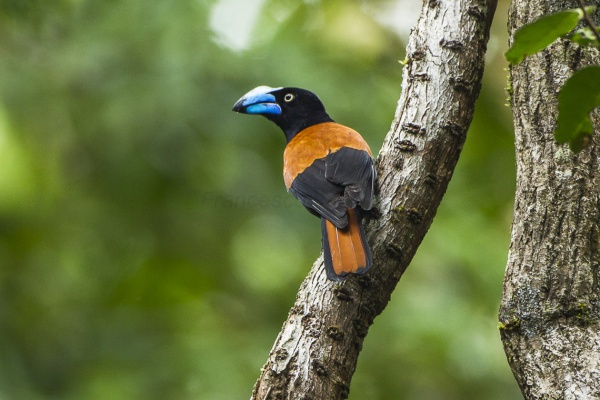Facts About Helmet vanga
The helmet vanga is a visually striking bird endemic to Madagascar. It is easily recognized by its blue-black plumage, rufous wings, and large, curved blue bill. Inhabiting the lowland and lower montane rainforests of northeastern Madagascar, this bird primarily feeds on insects. It is the sole species within the genus Euryceros and was initially misclassified within the shrike family before being correctly reclassified into the vanga family. Its closest relative within this family is likely the rufous vanga.
This considerably large bird measures approximately 28 to 31 cm in length and weighs between 84 to 114 grams. Its most distinguishing feature is the impressive, bright blue bill tipped with black. The helmet vanga is monogamous, with its breeding season occurring from October to January. Both male and female participate in nest construction, which typically contains two or three pinkish-white eggs.
However, habitat loss poses a significant threat to the helmet vanga. The population is estimated to range from 600 to 15,000 individuals and is becoming increasingly fragmented. The clearing of pristine rainforest for agriculture and logging is diminishing their habitat, and climate change is expected to exacerbate these challenges. Due to these threats, the IUCN has listed the helmet vanga as vulnerable.
